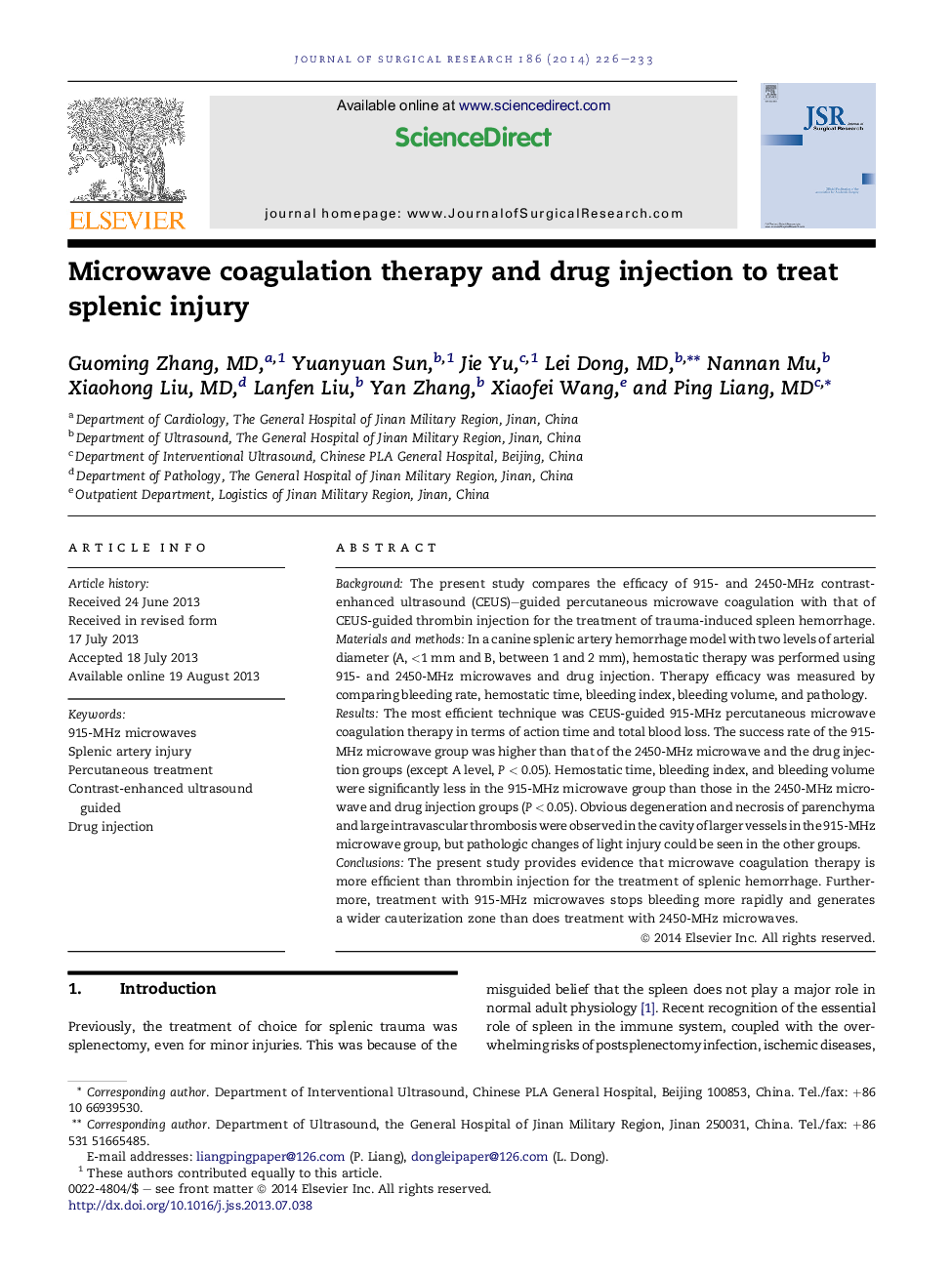| Article ID | Journal | Published Year | Pages | File Type |
|---|---|---|---|---|
| 6254162 | Journal of Surgical Research | 2014 | 8 Pages |
BackgroundThe present study compares the efficacy of 915- and 2450-MHz contrast-enhanced ultrasound (CEUS)-guided percutaneous microwave coagulation with that of CEUS-guided thrombin injection for the treatment of trauma-induced spleen hemorrhage.Materials and methodsIn a canine splenic artery hemorrhage model with two levels of arterial diameter (A, <1Â mm and B, between 1 and 2Â mm), hemostatic therapy was performed using 915- and 2450-MHz microwaves and drug injection. Therapy efficacy was measured by comparing bleeding rate, hemostatic time, bleeding index, bleeding volume, and pathology.ResultsThe most efficient technique was CEUS-guided 915-MHz percutaneous microwave coagulation therapy in terms of action time and total blood loss. The success rate of the 915-MHz microwave group was higher than that of the 2450-MHz microwave and the drug injection groups (except A level, PÂ <Â 0.05). Hemostatic time, bleeding index, and bleeding volume were significantly less in the 915-MHz microwave group than those in the 2450-MHz microwave and drug injection groups (PÂ <Â 0.05). Obvious degeneration and necrosis of parenchyma and large intravascular thrombosis were observed in the cavity of larger vessels in the 915-MHz microwave group, but pathologic changes of light injury could be seen in the other groups.ConclusionsThe present study provides evidence that microwave coagulation therapy is more efficient than thrombin injection for the treatment of splenic hemorrhage. Furthermore, treatment with 915-MHz microwaves stops bleeding more rapidly and generates a wider cauterization zone than does treatment with 2450-MHz microwaves.
